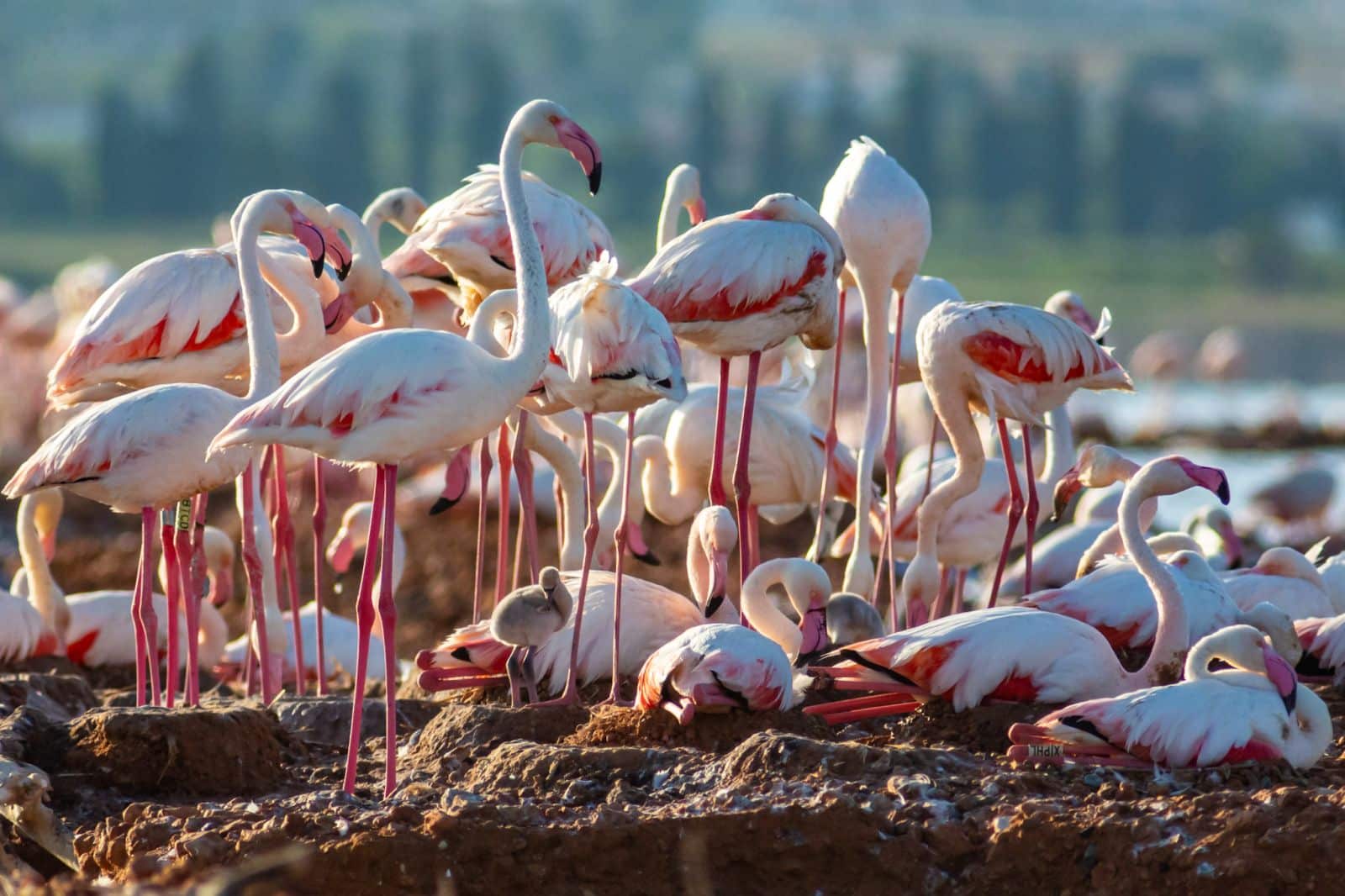They’re back, for the fifth year in a row. Thousands of pairs of flamingos have arrived at Torrevieja’s salinera lagoon to nest. At the moment there are approximately 2,500 couples, located in the lagoon, according to Federico Kenzelmann Area, a salinero and photographer who has been following the unique nesting of the species in the local area.
This year’s early couples started arriving in mid April and began preparing nests. From the initial 100 their numbers increased to 500 and now they are over 2,500… and growing. The first eggs could hatch on May 20.
The flamingos have always been part of the habitat of the Natural Park of the lagoons of Torrevieja and La Mata, but they had never chosen the wetland to reproduce until 2020. Several factors came together on that occasion for breeding pairs to settle in the lagoon, particularly in the central motte, better known as the pink lagoon, even though this natural space endures enormous human pressure.
While experts saw a future for the continuity of the reproductive colony we then had the pandemic when human confinement coincided with the months of courtship and nesting.
Human pressure was minimised in the wetland surrounded by thousands of homes. It was also helped by the cycle of torrential rains that flooded the wetlands of the south of Alicante months earlier, while the drought wreaked havoc in its traditional breeding areas, such as the Fuente de Piedra lagoon, close to Málaga.
The success of that occasion allowed the colony to repeat again in successive years. The determining factor is the pink lagoon itself. Built in the nineties to divide El Charco and protect the production of salt, it now houses one of the main flamingo breeding colonies in Spain.
In addition to common flamingos, some specimens of dwarf flamingo have also been sighted in recent weeks, that last year also nested for the first time in the lake.
The nesting site is isolated from the shore, only with access by the salt company and the natural park. As such, the natural predators of the young, such as boars and foxes, cannot enter. It is a place where birds are far away and not accessible to human intrusion.
The flamingos have become accustomed to the constant passage and the barges that carry the salt loaded from the harvesting machine to the drying rooms, but they appear not to feel threatened by their slow and heavy movement.
In nearby areas such as Santa Pola and El Hondo they have not been seen to nest in recent years, but the proximity of these wetlands, also those of the salt flats of San Pedro, allows them to diversify their food areas, but for the moment the flamenco chicks stay in Torrevieja.
During the last five years the interest in the flamingo and its presence in the saline lagoon has risen sharply. The profile of the bird can be seen on local roundabouts, in institutional advertising campaigns and decorating commercial macrocenters. At the same time the restive pink tone of the lagoon itself has become another tourist claim in a city that tries to flee its own image of massification.
But with the exception of joining in with the wide range of guided tours in the saline complex the sighting of these birds in their middle is difficult – they are several kilometers from the shore.
In addition, it is prohibited by the regulations of the natural park to use the trails around the lake although further north in La Mata there is a centre for visitors, with itineraries and viewpoints. Nor is it allowed to bathe in the waters of the pink lagoon, although the City of Torrevieja has come to include in its promotional video material many images of tourists sunbathing on its shores.






